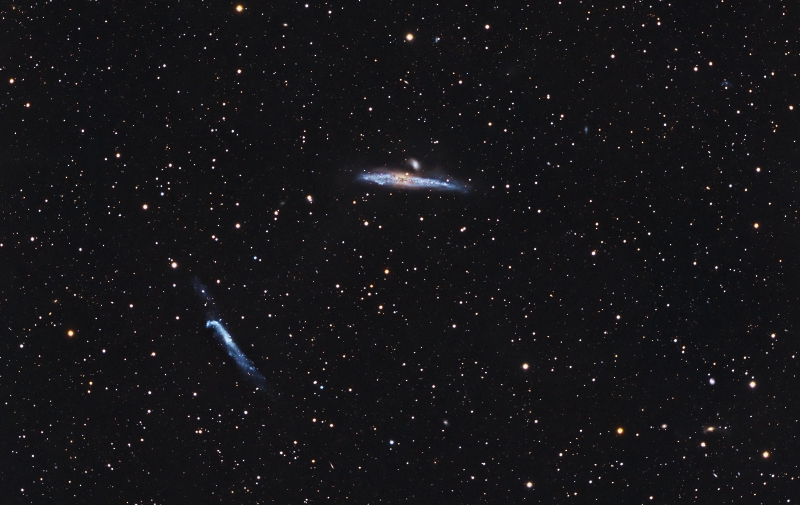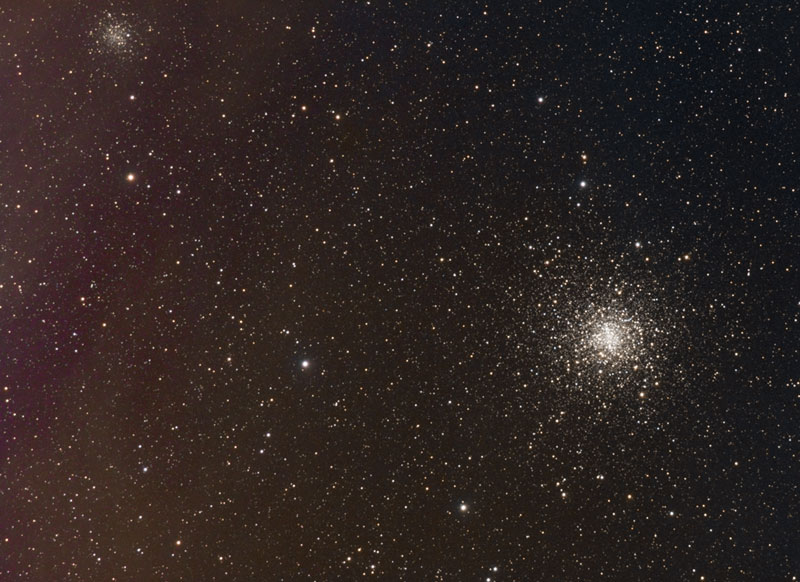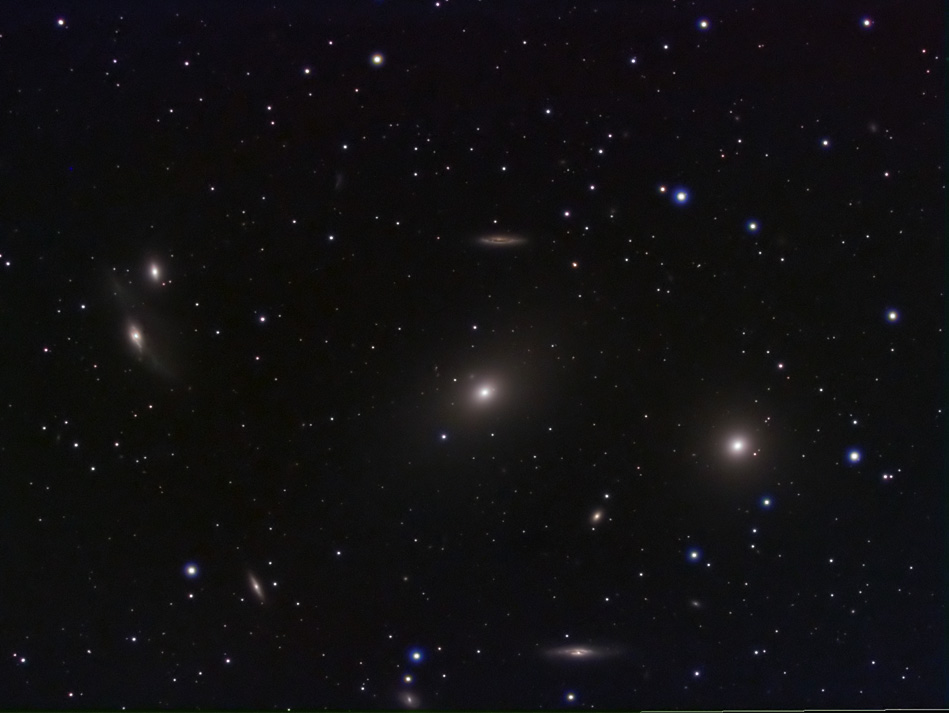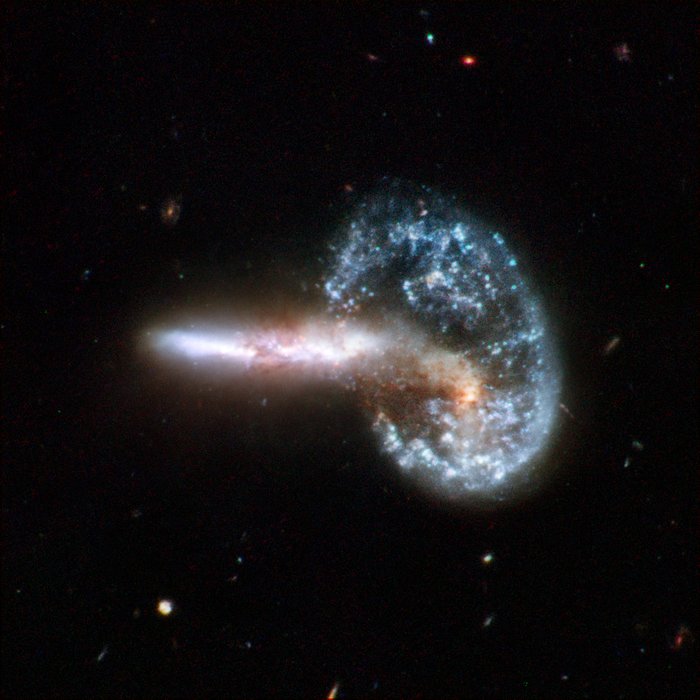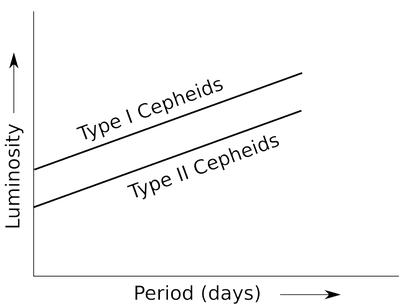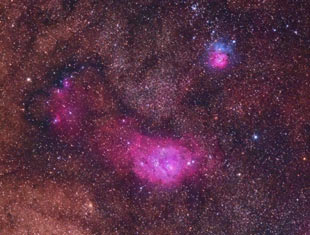Anyone who knows me knows I love refractors. Inch-for-inch, refractors are the best performing telescopes. Pinpoint star images, high resolution, and high contrast images are their hallmark.
In today’s world of refractor telescopes, there are achromats and apochromats, terms created to differentiate the levels of color correction of the respective lens systems. The classic achromatic refractor design uses a two lens objective, with one lens made of crown glass, and the other lens made of flint glass. With the lenses ground with proper curves and using glasses with different refractive indices, the result is a telescope that can bring to focus two of the three prime colors of light, typically red and blue wavelengths.
In the 1980’s, the apochromatic refractor became commercially available to the amateur astronomy market. Sophisticated designs appeared using combinations of two, three, or four lenses. Experienced telescope users found themselves learning a new vocabulary, with terms such as fluoro-crown, lanthanum, fluorite, FPL-51 or -53, APO-triplet, and Petzval. Apochromats offered improved sharpness, contrast, resolution, and color correction over the classic achromat refractors, while at the same time creating a more portable telescope with f-ratios of f/8, f/7, or less. Make no mistake, apochromatic refractors are the high performance Ferraris of the telescope world. But this optical perfection comes at a price. Apochromats are up to 10 times more expensive than an equivalent aperture achromatic refractor. Some of the exotic glasses are difficult to work with, and the production yield is lower than more conventional materials. For example, one telescope manufacturer has stated that even with their most advanced manufacturing processes, only one out of every ten fluorite lens sets is good enough for use in their telescopes. The cost of an apochromat refractor can get expensive very quickly as the size increases. A typical 80-mm apochromat retails in the $700 range versus an achromat of $250.. A 102-mm triplet can easily cost over $2,500 compared to an achromat costing $450.. The 130-mm apochromats fall into the $4,000-$5,000 realm, and prices exceeding $12,000 and higher are not unusual for larger apochromats.
The old telescope salesman explanation of an achromat refractor is a “false color-free image,” meaning there is no primary color fringing in the telescopic image. The telescope salesman pitch for an apochromat is “this time, I’m serious! It’s really false color-free!” This time, the salesman is pitching that the apochromat has no primary color nor secondary color fringing. Depending on the observer, the image improvement of an apochromat over an achromat can be described as either a slight aberration or a day-night difference. A lot depends on the sensitivity and sensibility of the refractor owner. From a technical viewpoint, there is no question that the apochromatic refractor offers better telescopic images over an achromatic refractor.
A tip to those buyers with apochromat tastes but are on an achromat budget, the following formula should be applied:
FromTelescope Optics: Evaluation and Design, by Harrie Rutten and Martin van Venrooij:
focal length >0.122D
where
D = diameter of the telescope objective in mm
If the focal length of an achromatic refractor is equal to or greater than this calculation, the residual chromatic aberration will not be a factor.
For example, a well-known refractor manufacturer (telescopes with stellar performance that give a great view!) at one time manufactured an 80mm refractor with a 750mm focal length. It was advertised as an f/9.4 (although mathematically it computes to an f/9.375). Using the above formula:
focal length >0.122D
>0.122 (80) = 9.76
which means the 80mm f/9.4 achromat refractor had very little residual false color and almost apochromatic performance! The optical designer has taken advantage of our light-polluted skies by using a combination of ED glasses, altered lens curves, and adjusting the air spacing between the two lenses of the achromat doublet. The color error is moved into the violet wavelengths to match the not-quite-black-really-deep-purple light-polluted background sky, resulting in an excellent performing telescope that produces sharp and crisp images with the color error conveniently and cleverly hidden in the light-polluted background. Hence, the telescope has an underground following as a hidden gem of telescopes for its near-apochromatic performance at achromatic refractor price!
So, if you have apochromat tastes in a refractor, but have only an achromat budget, remember this formula and apply it to the achromatic refractor you are interested in. There is a tradeoff in in size of the field-of-view, but if your primary interest is a refractor view without false color, keep this formula in mind and you might find another underground gem!
